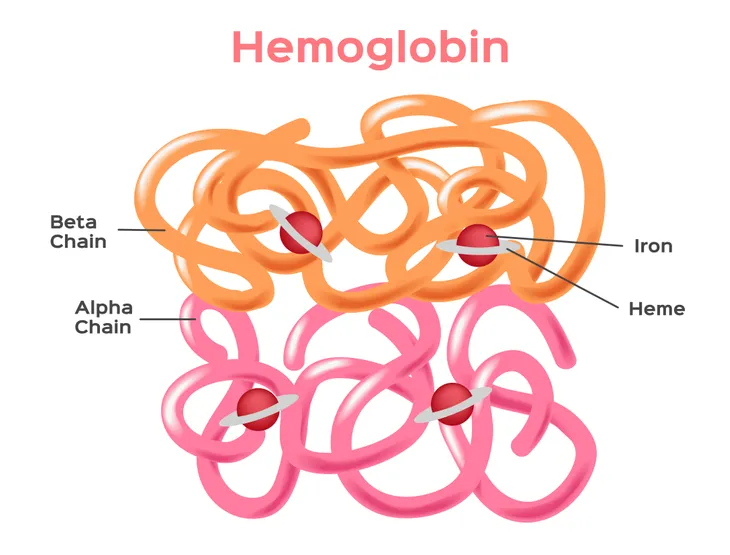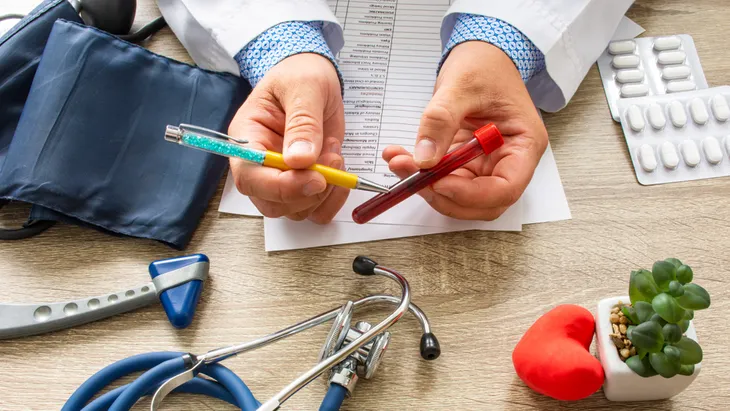When you get routine blood work done, do you know exactly what’s being measured? Aside from your red and white blood cell count, a complete blood test can let you know what your hemoglobin levels are.
It’s important to know your hemoglobin levels because it can indicate whether you’re at risk of conditions like anemia, cancer, and other infections. Your ideal hemoglobin level will depend on several factors. Here’s a rundown of what hemoglobin levels are and what yours should be right now.
What Do Hemoglobin Levels Measure?
Haemoglobin is also known as hemoglobin in the medical world. It’s a complex protein found in red blood cells. Ada Health says it helps circulate oxygen around the body and transports carbon dioxide from tissues to the lungs.
To find out your hemoglobin levels, you simply have to go through a complete count blood test. All it takes is a quick poke in the arm for doctors to collect the blood and have it sent to the lab. From there, you can find out the results and see if you’re currently in a healthy range.
Normal Hemoglobin Levels
Your ideal hemoglobin levels change as you grow older, though age is not the only thing that determines your healthy levels. Your sex and general health also indicate which level is best for you. For example, Healthline says that hemoglobin levels for men are slightly higher than for women.
Hemoglobin levels are measured in grams per deciliter (g/dL) of blood. These are the recommended normal levels for adults:
- Adult male: 13-g/dL or higher
- Adult female: 12-g/dL or higher
Hemoglobin Levels in Babies
Hemoglobin levels are a lot different for babies compared to adults. They tend to be much higher because they have higher oxygen levels in the womb. Healthline says they need more red blood cells to transport the oxygen. After a few weeks, the levels start to decrease.
Here are the normal levels for babies up to 1-year old.
- 0 to 30-days old: 13.4 to 19.9-g/dL
- 31 to 60-days old: 10.7 to 17.1-g/dL
- 2 to 3-months old: 9.0 to 14.1-g/dL
- 3 to 6-months old: 9.5 to 14.1-g/dL
- 6 to 12-months old: 11.3 to 14.1-g/dL
Hemoglobin Levels in Children
Once your child hits the 1-year mark, their ideal hemoglobin level changes. The range changes are a lot more spaced out compared to when they’re newborns. Sex doesn’t really have an impact on children’s levels until they reach adolescence at age 11.
- 1 to 5-years: 10.9 to 15.0-g/dL
- 5 to 11-years: 11.9 to 15-g/dL
- 11 to 8-years: 11.9 to 15.0-g/dL (female), and 12.7 to 17.7-g/dL (male)
Low Hemoglobin Levels
If you have low hemoglobin levels in your blood, then you may develop a blood disorder known as anemia. There are over 400 types of anemia, some of which can be caused by faulty or decreased red blood cell production.
According to WebMD, anemia is the most common blood condition in the U.S. as it impacts nearly 6-percent of the population. Cleveland Clinic says anemia can occur when:
- The body cannot make enough hemoglobin.
- Hemoglobin is not working right.
- The body cannot make enough red blood cells.
- The body breaks down red blood cells too fast.
Symptoms of Anemia
It’s important to recognize the signs of anemia, especially if you haven’t had blood work done recently. Someone experiencing these symptoms should see a doctor and it may be an indication that it’s time to get a blood test and check their hemoglobin levels.
People with anemia may experience:
- Dizziness or lightheadedness
- Feeling like you are about to pass out
- Fast or unusual heartbeat
- Headache
- Shortness of breath
- Pale or yellow skin
- Cold hands and feet
- Tiredness or weakness
- Pain in the bones, chest, belly, and joints
- Growth problems in children and teens
Other Causes of Low Hemoglobin Levels
Anemia is just one possible reason why hemoglobin levels can take a dive. Some examples of other medical conditions that can be linked to low levels include:
Increasing Hemoglobin Levels
If you’re not dealing with serious conditions related to hemoglobin levels, then you may be able to increase it through some natural remedies. You can start by including iron-rich foods into your daily meal. Medical News Today says this can boost the production of hemoglobin and help form more red blood cells.
Here are some tasty foods that can help increase your daily iron count and (hopefully) increase those low hemoglobin levels.
- Meat and fish
- Eggs
- Leafy green vegetables
- Soy products
- Dried fruits
- Green beans
- Peanut butter
- Nuts and seeds
Folate-Rich Foods
Another way to increase hemoglobin production is by increasing your folate intake. Folate is necessary to produce components of hemoglobin that allow it to carry oxygen. You can increase your folate intake by eating foods such as:
- Beef
- Spinach
- Rice
- Peanuts
- Black-eyed beans or kidney beans
- Avocados
- Lettuce
Remember, changing your diet is not a definite cure. Depending on the underlying issue, it may not help. So it’s best to speak with your doctor about your condition.
High Hemoglobin Levels
On the other end of the spectrum are high hemoglobin levels. There are medical conditions and lifestyle choices that can contribute to this. In some cases, high hemoglobin levels can be the side effect of taking certain medications.
Some medical conditions that are linked to high hemoglobin levels include:
- Polycythemia vera (when the bone marrow produces too many red blood cells)
- Chronic obstructive pulmonary disease (COPD), pulmonary fibrosis, or emphysema
- Heart disease
- Kidney tumors
- Dehydration
- Hypoxia
- Carbon monoxide exposure
Non-Medical Reasons
There are some external causes that can lead to high hemoglobin levels. One of those reasons is living at a high altitude. According to Altitude Physiology Expeditions, this happens because the hemoglobin in the blood increases at high altitudes in order to increase the amount of oxygen that can be carried.
Smoking cigarettes and taking performance-enhancing drugs are other known causes of high hemoglobin count. You should stop using both drugs in order to prevent high hemoglobin levels as well as other negative health problems from occurring.
How to Fix Your Hemoglobin Levels
Whether your hemoglobin levels are too low or too high, it’s important to speak with your doctor about how to fix them. Doctors will have to learn the underlying cause of your unhealthy levels in order to decide the proper form of treatment.
To stay on top of your hemoglobin health, make sure you get regular blood work. Healthline recommends getting a complete blood count at least once a year around the same time as your physical. But if you’re experiencing unusual symptoms, you may want to get your blood checked more often.















